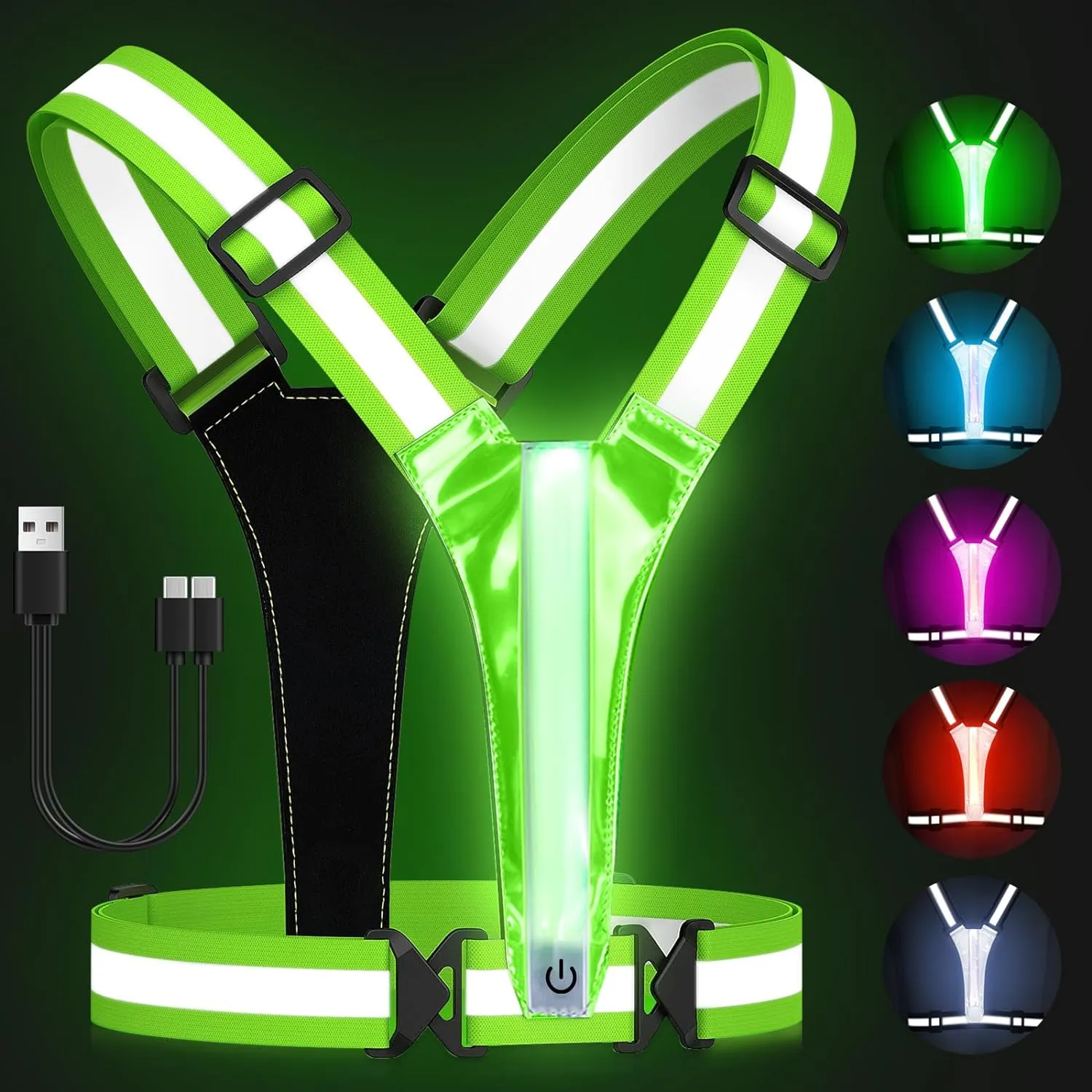
Running in the dark

10 min read
Running is a powerful and invigorating exercise, offering countless benefits for both the body and mind. But as the days grow shorter and nights grow longer, many runners find themselves faced with the challenge of running in the dark. While it may seem intimidating at first, running in the dark can be an incredibly rewarding experience if approached with the right mindset and preparation.
In this article, we’ll explore the benefits of running in the dark, discuss safety precautions to keep in mind, and provide tips on how to make your nighttime runs both enjoyable and safe. Whether you’re a seasoned runner or just starting out, this guide will help you embrace the night with confidence.
The Unique Benefits of Running in the Dark
Running in the dark offers a unique set of advantages that many daytime runners might not be aware of. Here are some of the most compelling reasons to lace up your shoes after the sun goes down:
Escape the Heat
One of the most obvious benefits of running at night is the cooler temperatures. During the warmer months, daytime runs can be stifling, with the sun beating down and humidity levels high.
Running in the dark, however, allows you to escape the heat and enjoy a cooler, more comfortable workout. This can lead to better performance and a more enjoyable experience overall.
Peace and Quiet
The world is a different place at night. Streets that are bustling with activity during the day become calm and quiet, offering a sense of tranquility that is hard to find in the daytime.
Running in the dark allows you to enjoy this peacefulness, making your run a meditative experience. The quiet environment can help you focus on your breathing, your stride, and your thoughts, leading to a more mindful run.
Fewer Distractions
Daytime runs are often filled with distractions: traffic, pedestrians, noise, and more. At night, these distractions are minimized, allowing you to concentrate solely on your run. This can lead to a more focused and effective workout, helping you to achieve your running goals more efficiently.
Improved Mental Toughness
Running in the dark requires a certain level of mental toughness. The unfamiliarity of your surroundings, the lack of light, and the silence can be challenging, but overcoming these obstacles can make you a stronger runner. Nighttime running forces you to rely on your instincts and sharpen your senses, which can translate into improved performance during daytime runs as well.
A Change of Scenery
If you’re used to running the same routes during the day, running at night can offer a fresh perspective. The same streets and trails you traverse during the day can look completely different under the cover of darkness. Streetlights, moonlight, and shadows create a new atmosphere, making your run feel like an adventure. This change of scenery can reignite your passion for running and keep your routine from becoming stale.
Safety First: Essential Precautions for Running in the Dark
While running in the dark has its benefits, safety should always be your top priority. The reduced visibility and quieter environment can present risks that aren’t as prevalent during the day.

Here are some essential precautions to keep in mind:
Wear Reflective Gear
One of the most important things you can do to stay safe while running in the dark is to make yourself visible. Wear reflective clothing, such as jackets, vests, and shoes, to ensure that drivers and other people can see you.

Reflective gear catches the light from car headlights and streetlights, making you more noticeable. Consider adding a reflective armband or belt for extra visibility.
Use a Headlamp or Flashlight
Illuminating your path is crucial when running in the dark. A headlamp or handheld flashlight can help you see where you’re going and avoid obstacles like potholes, curbs, or debris. A headlamp has the added benefit of keeping your hands free while you run. Look for a headlamp that offers a comfortable fit and adjustable brightness so you can tailor the light to your needs.
Run on Well-Lit Routes
When choosing your running route, opt for well-lit areas with good visibility. Stick to streets and paths that you are familiar with and know to be safe. If possible, run in areas with streetlights or other sources of illumination. This not only helps you see where you’re going but also makes you more visible to others.
Run Against Traffic
If you’re running on the road, always run against traffic. This allows you to see oncoming vehicles and react if necessary. Running with traffic puts you at a greater risk of being struck by a car, as drivers may not see you until it’s too late. Running against traffic also gives you more control over your safety, as you can move to the side if needed.
Bring Identification and a Phone
Always carry some form of identification and a phone with you when running in the dark. In case of an emergency, it’s important that first responders know who you are and how to contact your loved ones. A phone allows you to call for help if needed and can also be used to track your run or listen to music. Consider using a running belt or armband to carry these items securely.
Tell Someone Your Route
Before heading out for a nighttime run, let someone know your planned route and expected return time. This way, if something goes wrong, someone will know where to look for you. Share your location using a smartphone app if possible, so that your loved ones can track your progress in real-time.
Be Aware of Your Surroundings
Running in the dark requires heightened awareness. Stay alert to your surroundings and be cautious of any unusual activity. Avoid wearing headphones or keep the volume low so you can hear what’s going on around you. Trust your instincts—if something feels off, don’t hesitate to change your route or head home.
Tips for Enjoyable Nighttime Running
Now that we’ve covered safety, let’s talk about how to make your nighttime runs as enjoyable as possible. Here are some tips to help you get the most out of running in the dark:
Warm Up Properly
Warming up is important for any run, but it’s especially crucial when running in the dark. Cold muscles are more prone to injury, so take the time to stretch and do some light jogging before you start your main run. This will get your blood flowing and prepare your body for the workout ahead.
Dress for the Weather
Nighttime temperatures can be significantly cooler than daytime temperatures, so dress accordingly. Layer your clothing so that you can adjust to changes in temperature as needed. Start with a moisture-wicking base layer to keep sweat away from your skin, then add insulating layers for warmth. A wind-resistant jacket can also be helpful if it’s breezy.
Pace Yourself
Running in the dark can feel different from running during the day, and it may be harder to gauge your pace. Start out slower than you normally would and gradually increase your speed as you become more comfortable. Pay attention to your breathing and effort level, and adjust your pace as needed.
Stay Motivated with Music or Podcasts
If you enjoy listening to music or podcasts while running, create a playlist or download episodes in advance. The right soundtrack can keep you motivated and make your run more enjoyable. Just be sure to keep the volume low enough that you can still hear your surroundings. If you prefer not to use headphones, consider a small portable speaker.
Run with a Buddy
Running with a friend or in a group is a great way to stay safe and have fun while running in the dark. A running buddy can help you stay motivated and provide an extra layer of security. If you don’t have a regular running partner, check out local running clubs or online communities to find others who are interested in nighttime runs.
Cool Down and Stretch
After your run, take the time to cool down and stretch. This helps your muscles recover and reduces the risk of injury. A proper cool-down also signals to your body that it’s time to relax, which can help you wind down before bed. Gentle stretching, foam rolling, and deep breathing exercises are all great ways to cool down after a nighttime run.
Reflect on Your Run
Nighttime running offers a unique opportunity for reflection. After your run, take a few moments to think about how it went. What did you enjoy? What challenges did you face? Reflecting on your run can help you identify areas for improvement and set goals for future runs.
Addressing Common Concerns About Running in the Dark
For many runners, the idea of running in the dark comes with a few concerns. Let’s address some of the most common worries:

Is Running in the Dark Safe?
Running in the dark can be safe if you take the proper precautions. Visibility is the biggest concern, so make sure you wear reflective gear, use a light source, and choose well-lit routes. Running with a buddy or in a group also adds an extra layer of safety. Always stay alert to your surroundings and trust your instincts if something doesn’t feel right.
Will I Get Injured Running in the Dark?
Running in the dark does present some additional risks, such as tripping or slipping due to reduced visibility. However, these risks can be minimized by using a headlamp or flashlight, running on familiar routes, and paying attention to your footing. Warming up properly and listening to your body can also help prevent injuries.
What If I Don’t Feel Comfortable Running in the Dark?
If running in the dark makes you uncomfortable, it’s okay to start small. Begin with shorter runs on well-lit, familiar routes, and gradually build up your confidence. Running with a friend or group can also help you feel more secure. If you find that nighttime running isn’t for you, there are always other options, such as early morning runs or treadmill workouts.
How Do I Stay Motivated to Run in the Dark?
Staying motivated to run in the dark can be challenging, especially if you’re used to running during the day. Setting goals, such as training for a race or achieving a personal best, can help keep you motivated. Listening to music or podcasts, running with a buddy, and mixing up your routes can also make nighttime running more enjoyable. Remember that every run is an accomplishment, no matter the time of day.
Conclusion: Embrace the Darkness
Running in the dark may seem daunting at first, but with the right preparation and mindset, it can become a rewarding part of your fitness routine. The peace and quiet of the night, the cooler temperatures, and the opportunity to see your surroundings in a new light are just a few of the benefits of nighttime running. By following the safety precautions and tips outlined in this article, you can enjoy the unique experience of running in the dark with confidence.
So, lace up your shoes, grab your reflective gear, and hit the pavement. The night is waiting for you.


